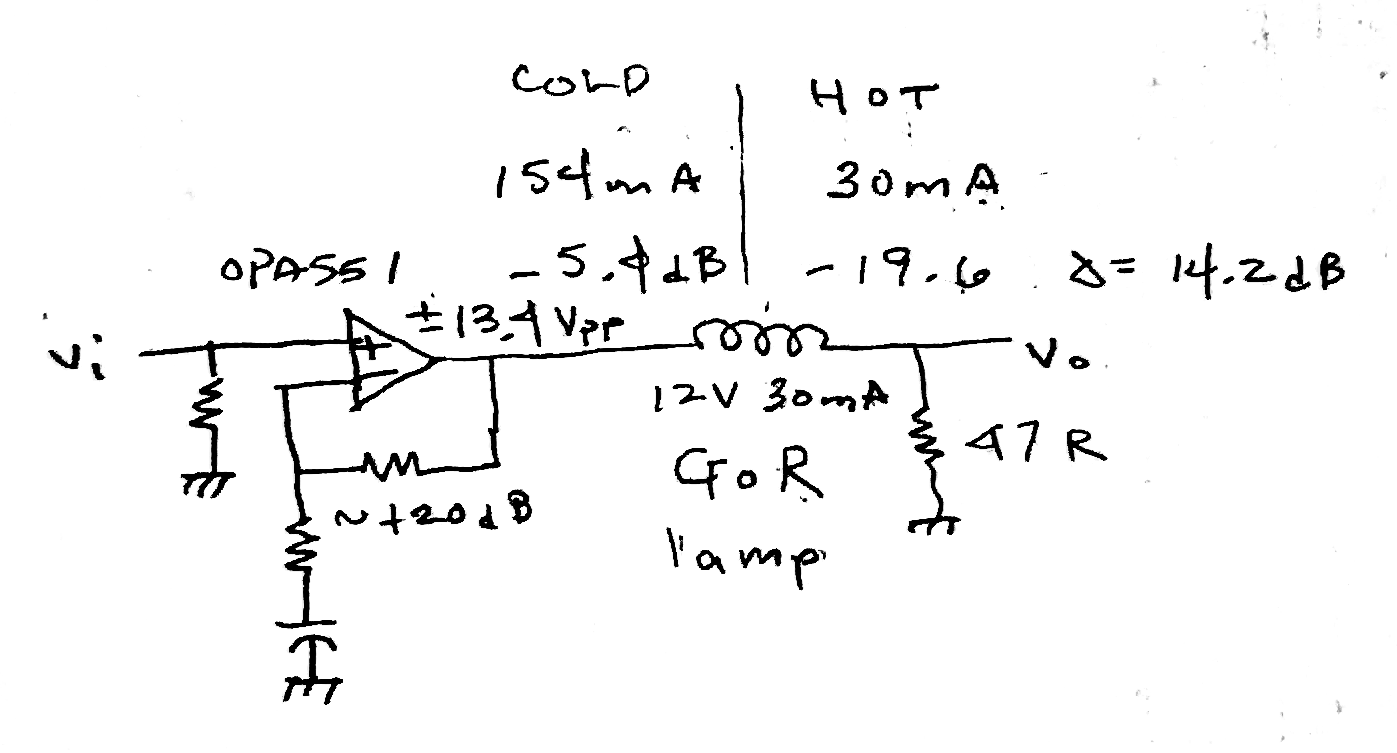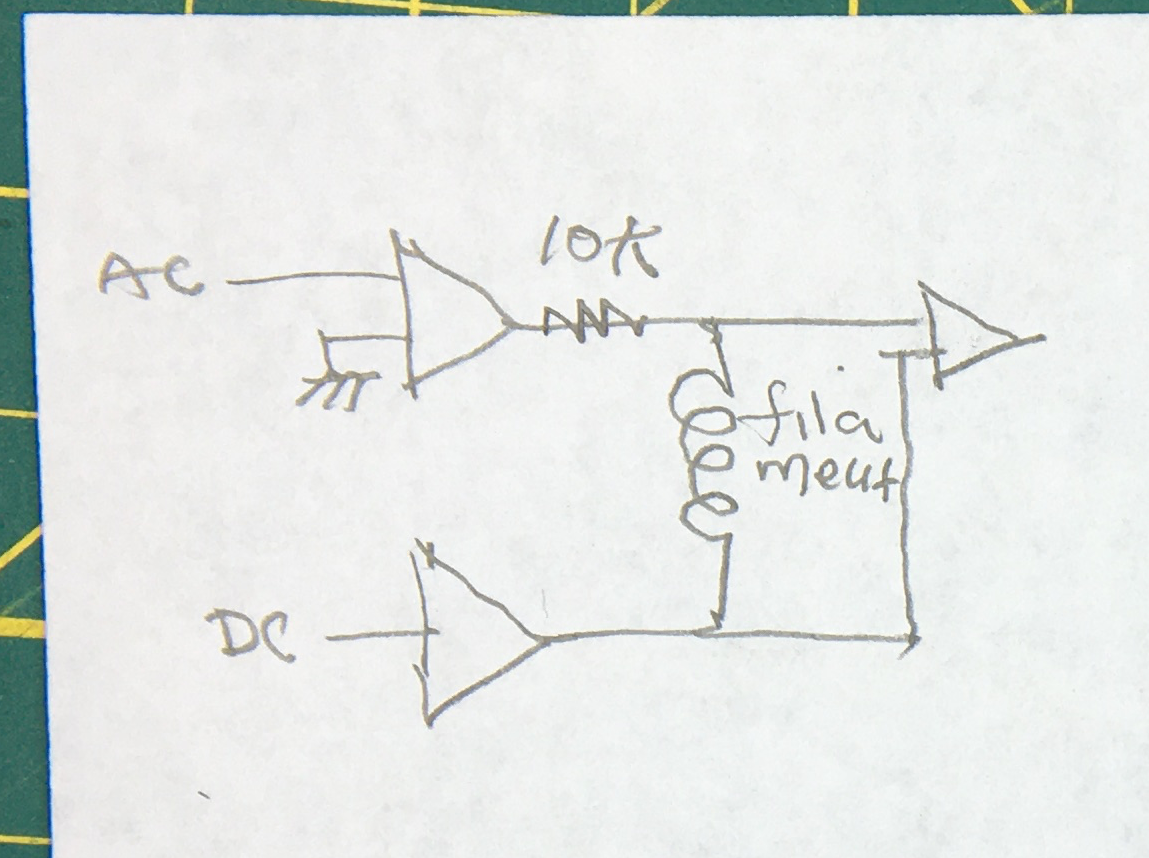Bo Deadly
Well-known member
Ok, I'm about to get weird.
I was thinking about taking some old tech and mixing it with new tech (just because it's less likely to have been explored).
A "Grain of Rice" (GoR) incandescent lamp is a tiny light bulb (literally the size of a grain of rice). These (or more commonly the bigger "Grain of Wheat" variant) can be used with an LDR as the variable resistor in a compressor but the bulb filament itself can also be used as a resistance element. The resistance of the filament depends on it's temperature. If it is illuminated / hot, it's resistance goes up. More specifically, if the GoR filament is cold, it's resistance is ~40 ohms but when it's hot it's ~400 ohms.
Here is a theoretical GoR compressor circuit:

So as signal level increases, more current is passed through the filament, it's resistance increases and thus you get attenuation. Very simple and elegant. But ...
Obviously this has some problems like the fact that the impedance of the element and shunt resistor is high enough that some significant gain is needed and that translates directly into noise. But the higher impedance is necessary for good attenuation. And, even if that can be overcome (drive differentially?), the timing is a little too slow for most things.
Ideas?
I was thinking about taking some old tech and mixing it with new tech (just because it's less likely to have been explored).
A "Grain of Rice" (GoR) incandescent lamp is a tiny light bulb (literally the size of a grain of rice). These (or more commonly the bigger "Grain of Wheat" variant) can be used with an LDR as the variable resistor in a compressor but the bulb filament itself can also be used as a resistance element. The resistance of the filament depends on it's temperature. If it is illuminated / hot, it's resistance goes up. More specifically, if the GoR filament is cold, it's resistance is ~40 ohms but when it's hot it's ~400 ohms.
Here is a theoretical GoR compressor circuit:

So as signal level increases, more current is passed through the filament, it's resistance increases and thus you get attenuation. Very simple and elegant. But ...
Obviously this has some problems like the fact that the impedance of the element and shunt resistor is high enough that some significant gain is needed and that translates directly into noise. But the higher impedance is necessary for good attenuation. And, even if that can be overcome (drive differentially?), the timing is a little too slow for most things.
Ideas?




